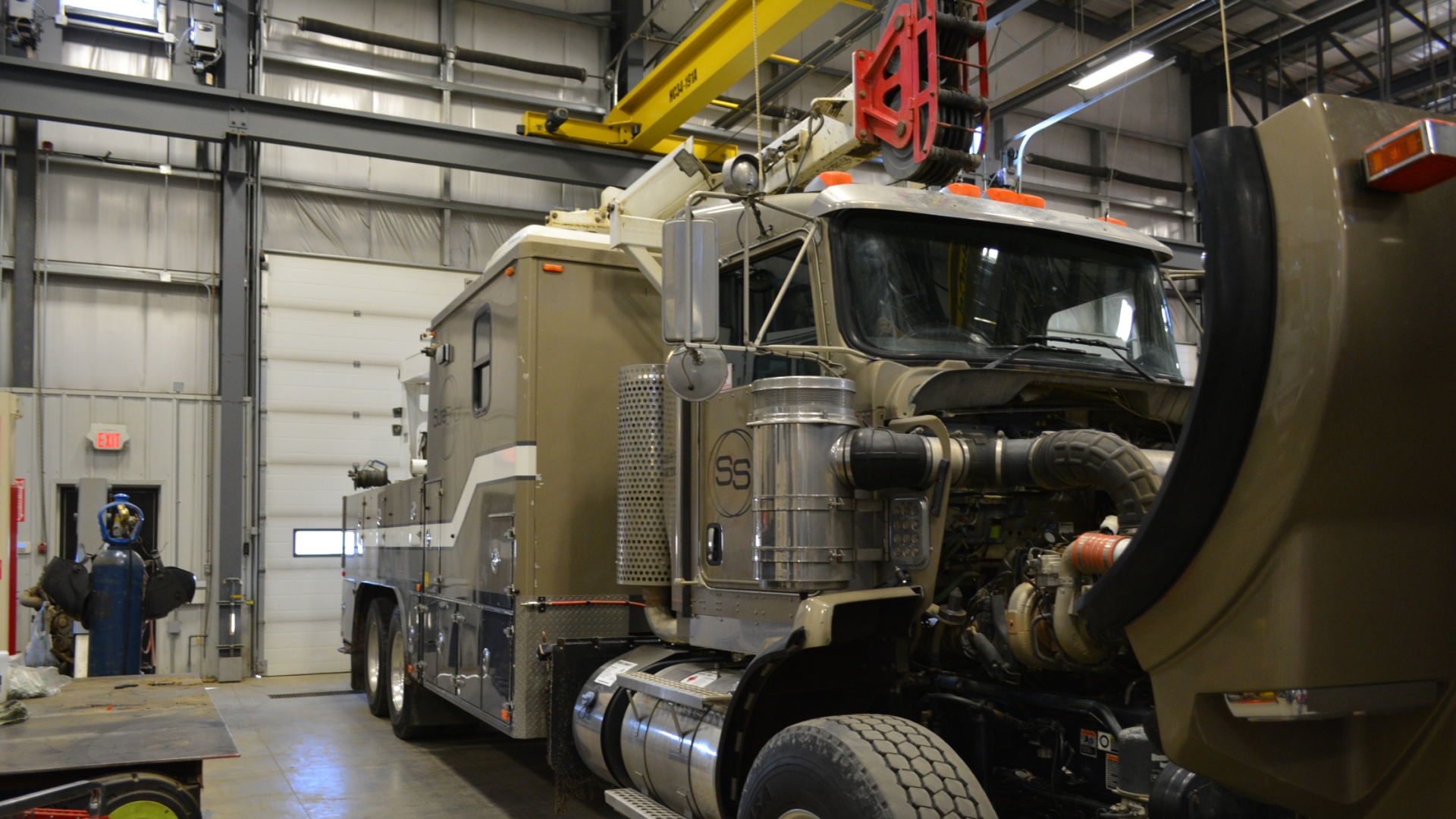Why Diesel Engines Are Better Than Gas Engines: Diesel engines possess a number of efficiency advantages over gasoline engines. These grow out of significant differences in how diesels operate. The diesel engine does not use a throttle to control airflow into the engine or a spark plug to start ignition of the fuel as do gasoline engines. Instead, load is controlled by the amount of fuel injected.
The timing of fuel injection controls combustion timing, as the fuel ignites almost immediately after being injected into the hot compressed gas within the cylinder. As a result, diesels eliminate the significant pumping losses that come from forcing air past the throttle in gasoline engines. The heterogeneous combustion process of a diesel also allows much leaner air/fuel ratios than with pre-mixed gasoline combustion.
These lean air/fuel ratios reduce average in-cylinder temperatures and improve thermal efficiency by reducing heat losses to the cooling system and exhaust. In addition, the diesel engine is not subject to the knock constraints of a homogeneous-charge engine and can operate with much higher compression ratios for increased efficiency.
An indirect advantage of diesel engines is that the higher density of diesel fuel results in about 14% more energy per gallon than gasoline. This means that diesel vehicles will go 14% farther on a gallon simply because of the higher energy content. On the other hand, diesel fuel also has 14% more carbon per gallon, so this advantage does not apply to CO2 emissions.
For all that, diesel engines historically have had limited consumer appeal for passenger vehicles in the United States. Diesels used to be hard to start, noisy, and smelly, and they did not provide as much horsepower. General Motors also damaged the reputation of diesels in the late 1970s by rushing out an extremely unreliable product in response to the fuel crises in the 1970s.
RELATED: How To Operate A Commercial Truck
GM converted a gasoline V8 to a pre-chamber naturally aspirated diesel—a marketing disaster. Technology improvements such as direct fuel injection, higher fuel line pressure, and turbocharging have since almost fully addressed the performance and reliability issues, though diesels can still chatter a bit after startup and at idle.
These advances, together with fuel-tax policies encouraging diesel use, have enabled such engines to capture large passenger vehicle market shares in Europe and India. The remaining challenges for diesels are primarily cost and emissions control.
Diesel engines inherently cost more to manufacture than gasoline engines because of the need for increased structure to contain higher combustion pressures and because of their more sophisticated and higher pressure fuel injection systems. It is also more expensive and more difficult to control particulate and nitrogen oxide (NOX) emissions from diesel engines, because of their lean, heterogeneous combustion process.
In gasoline engines, vaporized fuel is mixed with air before a spark sends a flame through the mixture. As a result, the fuel is completely burned except for quench layers at the chamber walls and in crevices. The fuel in diesel engines ignites shortly after being injected, and droplets of fuel do not have time to fully evaporate and mix with air before combustion.
As a result, diesel combustion is characterized by diffusion burning in which oxygen cannot fully penetrate the burning flame front surrounding the fuel droplets, resulting in an unburned carbon core. As the gas cools during passage through the exhaust, carbon particles adsorb uncombusted and partially combusted products, forming particulates.
Modern particulate traps are effective in controlling the release of particulate emissions, but they are not cheap. A common misconception is that diesel engines produce a lot of NOX. Engine-out NOX emissions from diesel engines are lower than from gasoline engines under some conditions, as NOX formation is proportional to combustion temperature.
Diesels have much lower bulk combustion temperatures than gasoline engines, although temperatures around the fuel droplets are higher. The problem is that reducing NOX emissions requires splitting NOX into nitrogen and oxygen. This process will not proceed if there is excess oxygen in the exhaust.
Gasoline engines run at stoichiometric with extremely precise air/fuel control that allows three-way catalysts to reduce NOX at greater than 99% efficiency. However, as diesels run unthrottled, there is always excess oxygen in the exhaust, and the three-way catalyst does not work.
The solution for diesel engines is some combination of engine-out NOX control through exhaust gas recirculation (EGR) and injection retard, plus exhaust after treatment using lean-NOX traps (LNT) or selective catalytic reduction (SCR) using urea injection. However, these systems are expensive; engine-out NOX control and LNT systems increase fuel consumption; and SCR systems require periodic refilling of a urea tank.
The price difference
Diesel fuel, which is syrup-like compared to watery gasoline, packs more of a punch in terms of energy per unit of weight than gasoline (say, per gallon or liter). Even though it often costs more than gasoline, it contains more potential energy, so less diesel is required in terms of fuel to accomplish the same amount of work (in this case, driving distance) as gasoline.
That’s why diesel vehicles tend to get mileage in the 30s, 40s, or 50s — or more — depending on the engine and vehicle type. In terms of fuel comparative costs, it’s either a wash or a slight advantage for either fuel, depending on the price difference, vehicle, and driving style. But overall, the final cost for using either fuel over time is going to be nearly the same.
Diesel owners also have another fueling option: Biodiesel. Biodiesel is made from non-petroleum sources such as fry oil or vegetable oil. Indeed, the first diesel engines ran on peanut oil-derived diesel fuel. And while making your own gasoline at home is very complex, dangerous, and ill-advised, it is possible to safely make your own biodiesel using ready-made kits.
Getting your diesel vehicle to run on biodiesel may require some small modifications — especially if it’s older — but it depends on several factors, including what percentage of your fuel is biodiesel, which can be blended with regular diesel. There is a large biodiesel community online that can answer questions about the popular alt-fuel.
The per-gallon cost of bio-diesel may also be higher than pump fuel, but since you can make it yourself, it really depends on aggregating the cost of the equipment, the oil source (which can be free), and your time.
Power output: Horsepower vs. torque
The output of gasoline and diesel engines is measured in terms of horsepower and torque. Horsepower is a measure of power, while torque is a measure of an engine’s twisting force on the driveline. Big amounts of both are great, but if you have a lot of horsepower with only a little torque, your vehicle is going to be slow to get going.
It’s torque that gets things moving, which is why diesel engines are used in big trucks; they are great for moving heavy loads because they have so much torque. But diesel engines don’t rev up very high, so they make less horsepower on average than gas engines, which is why there aren’t many sports cars with diesel engines.
What manufacturers have found is that drivers love torque, both in pickups and cars. Step on the accelerator pedal and a diesel-powered car has brisk acceleration. Coupled with a capable transmission, modern diesel engines can get going fast in a hurry.
While they don’t scream to a high redline like a gas engine, that’s not a big deal for most people, who would rather have real-world power (torque), acceleration, and good gas mileage.
Reliability
Because diesel engines use compression ignition, which can quickly ruin a gas engine, they’re built tough. And because they come from a workhorse heritage, they tend to be reliable and require relatively little care. This used to translate into a ton of weight, but with modern manufacturing methods, the weight penalty for a diesel engine has been greatly reduced and the engine’s weights are now almost on par with gas engines.
Also, a diesel engine is simpler than a gas engine since it runs without spark plugs and the associated electrical system needed for them. Now, cars and SUVs can run on diesel and have performance more akin to a gas engine, but with the added gas mileage and reliability of a diesel.
In general, a diesel engine will outlast a gas engine in terms of how many miles or hours it can run before it needs major service, so repair bills are smaller and typically further apart for a diesel engine. Keep in mind these are broad statements; you can encounter an unreliable diesel (especially if it hasn’t been maintained properly) and many gas engines go 200,000 miles or more before needing a rebuild.
Pollution
This is one reason diesels have traditionally had a hard time making inroads in the new car market — especially in the wake of Dieselgate — but technology has caught up and now diesels run cleaner than ever before. This applies to big rigs, pickups, and cars, though, diesels can still be dirtier than cars because the fuel does not burn as cleanly as gasoline.
All the black stuff coming out semi exhausts for decades included a lot of soot, caused in part by the burning of sulfur, which is present in diesel fuel. Most of the sulfur, however, has been removed from modern diesel fuel, and further filtration of diesel exhaust in some cars has actually pushed them to the forefront of clean vehicles.
Many diesel cars now use a separate additive called DEF, also known as AdBlue. AdBlue is a urea-based liquid additive that is held in a small tank onboard the vehicle and is used to treat diesel exhaust to make it cleaner.
Noise
Let’s face it, early diesel cars sound just like… trucks. It didn’t matter if it had a Mercedes-Benz star on the hood and got 50 mpg, it still sounded like a small semi when you started it. Once again, however, modern technology has largely mitigated this complaint. The noise pollution often associated with old diesels is gone, along with the cloud of dark smoke that appeared when the vehicle started up.
And from the inside of most diesel passenger vehicles, the driving experience is essentially the same as a gas-powered car. For most people, if you didn’t tell them they were in a diesel-powered vehicle, they probably wouldn’t know.





